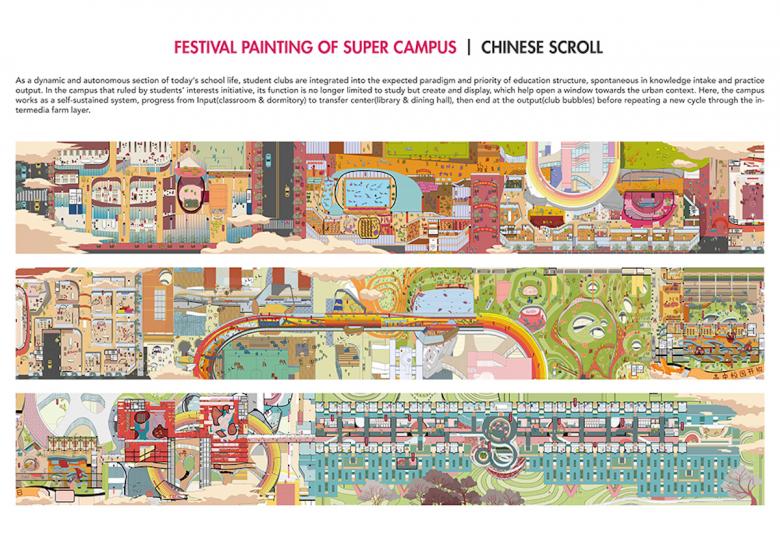Super Campus
Volver a la lista de ProyectosRETHINKING THE CAMPUS COMPLEX
Super Campus is a high-density educational complex that locates at the CBD of Pudong, Shanghai. Engaging drastically different social and physical contexts, the proposal explores new programmatic and typological possibilities in campus design, through the study of a new high-school operational model that prompted by student clubs.
Super campus is not only reflected in the design characteristics of high FAR, composite functions and innovative school mode, but also in the class-processing mode of teacher guidance, student dominance, and effective collaboration. Externally, in a high-density urban context, designers return the bottom space to the city and alleviate the shortage of space by sharing between schools and their adjacent communities. Internally, designers a new input-output system to satisfy various requirements of school management, student autonomy and external interactions with the city. The final design is full of crazy ideas without losing the possibility and has the dual attributes of romance and reality.
Super Program: The campus is located in the CBD. There are several loop lines at different levels around the site, which is connected to the city in various layers. Not only is the school itself abundant in multiple functions, but it also adds a lot of student society space, thus forming a large educational complex which partly shares with the city. Super FAR: The target FAR of Super Campus is 3.0, while the FAR of ordinary school typology in China is about 0.6-0.8. The FAR that exceeds five times the regular campus inevitably leads to high complexity and integration. Super Club: The clubs are the most flexible part of the campus, representing students’ spontaneous vitality and creativity, so we use the club-related space as an entry point. Moreover, the introduction of external training functions and club-related spaces in campus design means that the functions of the campus will be more complex and requires a new operation mode. Super System: The involvement of urban activity and club life has rendered the old single-core model that was developed around the primary teaching no longer applicable. Therefore, we explore a new to meet the multiple needs of campus management, student autonomy, and external interactions. Super Collaboration: We kept a high turnover rate in the grouping process, in which 13 team members can cooperate at least once. At the same time, different cooperation modes are adopted at various stages, such as docking, arguing, reconciling, and seeking common ground while reserving differences. The coordination of all the group and the individuality of each team member in their respective designs have made the whole project highly holistic and show our vision of Super Campus and even urban life. Super Space: Generally, the campus can be separated into three different layers. External training and huge club bubbles at the bottom that connect the city with urban canyon. The natural intermedia surface and campus core for dining and reading transfer space from creating to learning. Teaching buildings and the dormitory on top, to create a peaceful but dynamic space for study and living.






